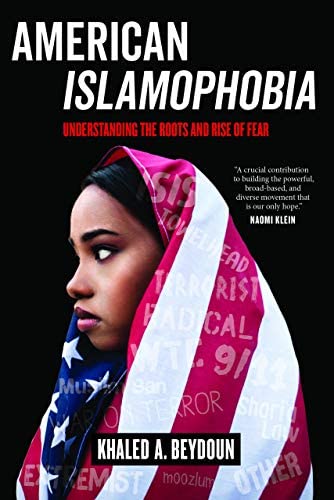
Author: Khaled A. Beydoun
Topics: Islamophobia in the United States, Islam, and Politics in the United States
Summary
Islamophobia is a term uttered enough to be recognizable, but do we truly understand its scope? Do we understand the breadth of victims it affects across poverty, gender, legal status (often lack of), and race intersections? Islamophobia is defined as a “united state of fear” galvanized by hatemongers and stoked by damaging policies targeting Islam and Muslims, which is fed off of century-old hate in American society.
Beydoun provides a candid and accessible introduction to Islamophobia, describing what it is, how it evolved, and how to combat it, encouraging readers to push beyond the Trump administration’s damaging rhetoric and policies to enact change. Drawing from court cases and news headlines, personal experiences, and lessons from his career as a professor, Beydoun masterfully humanizes those impacted by Islamophobia, encouraging us to read their stories and connect with them beyond mere statistics.
American Islamophobia seamlessly connects the history of anti-muslim hostility and policy to modern Islamophobia proliferating the United States today, aiming to “trace the roots of the system of animus we now call Islamophobia, and provide a lasting narrative that highlights what it actually is, what and where it stems from, and most importantly, who it impacts.” Readers dissect the three dimensions of Islamophobia: private, structural, and dialectical before examining the intersection between this central thesis and concepts such as “Orientalism” and the “Naturalization-Era” court cases involving immigrants seeking citizenship. Beydoun then focuses mainly on the aftermath of 9/11 and the subsequent “war on terror” which placed the fears of terrorism entirely on Islam and Muslim citizens and immigrants. Government actions such as the PATRIOT Act, NSEERS, or the National Security Entry and Exit Registration System are explored in depth, followed by chapter five’s exploration of CVE or Countering Violent Extremists policy. These policies normalized anti-muslim sentiment paving the way for the Trump administration to enact the Muslim Ban, rightly given an in-depth exploration in chapter seven. Beydoun also forms and highlights often overlooked links between the history of Islamophobia and modern movements including Black Lives Matter. “The road ahead is daunting,” Beydoun warns audiences of his lectures and this reading experience, but hopes to encourage those willing to recognize Islamophobia and actively combat it to be vigilant, and offers “the pale consolation that today’s Islamophobia is not entirely new.” By recognizing its roots, we can begin to enact inclusion and understanding for the Muslim and Islamic communities within this country.
You’ll Love This Book If
If you’re seeking a well-informed handbook illustrating the history of Islamophobia and documenting this “definitive juncture in our country’s history” where we recognize its significance and impact, then this book is for you.
Trigger Warning
This book contains graphic descriptions of violence, hate crimes, and murders about Islamophobia.
